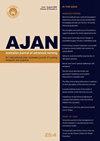多发病患者护理的连续性:护士主导的护理协调服务模式的开发
IF 1.3
4区 医学
Q3 NURSING
引用次数: 1
摘要
目的:在一个多学科团队中合作开发一种护士主导的护理模式,并支持多发病患者在初级-次级界面的护理连续性。背景:现有的护理模式通常基于医疗模式,旨在管理单一疾病,因此为多发病患者提供医疗保健面临重大挑战。先前已经证明了影响主要-次要界面的护理模型的特定设计元素,然而,这些元素尚未应用于开发护士主导的多发病患者护理模型。研究设计和方法:这是两篇系列文章中的第一篇,是一项更广泛的行动研究的一部分,并报告了一种模型的开发,该模型随后将根据为多发病率人群提供护士主导的护理协调服务的可行性进行评估。本文报告了第一个行动研究周期和方法,包括文献检索、利益相关者参与论坛、验证研讨会、团队会议以及专业参与和验证。结果:来自两个利益相关者论坛的数据被分类为257份“结构、过程和结果”声明和86份与目标相关的声明。这些与文献中护理模型的设计元素交叉引用,最终聚合为主题。然后,将汇总的主题整合到护士主导的护理协调服务的护理模式中。该模型由一个总体组成部分、4个领域和6个具有基础标准的业务领域组成。结论:通过利益相关者咨询,考虑到以前模式和构建块的优势,开发了一种新的护士主导的护理模式,为初级-次级界面的过渡医疗管理提供了一条途径。将治理和文化纳入模型的领域,使该方法具有实用性和适应性,有助于在临床工作场所成功实施变革管理和模型。计划对该模型进行进一步评估和改进,并将在本系列分为两部分的第2部分中进行报告。对研究、政策和实践的启示:这些发现为模式的实施和护士主导的护理模式的进一步研究提供了方向。所报告的支持文件、系统和流程定位了该模型,以支持变革,并指导在初级和次级医疗保健界面工作的临床从业者和护理管理人员。模型实施的未来成功可以为卫生工作者政策和协调的医疗管理提供证据。关于这个主题已经知道的内容:影响主要-次要界面的护理模型的特定设计元素已经在之前进行了演示。在初级和次级护理界面提供的干预措施,特别是阶梯式护理和共享护理模式,对抑郁症的管理是有效的。已建立的模型设计元素和干预措施,以提高初级-次级界面护理的连续性,尚未应用于护士主导的慢性病护理模型,仍需要在研究环境中进行开发。本文补充道:一种新的以人为中心的护士主导的护理协调模式,医疗管理活动旨在支持和促进个人机构在医疗优化方面的发展。一个具有特定领域和标准的模型,有可能应用于一级和二级环境中护士主导的服务,适用于一系列患者。将治理和文化作为领域纳入模型,以实现初级和次级医疗保健接口之间的变革、模型实施和护理连续性的最佳可能性。本文章由计算机程序翻译,如有差异,请以英文原文为准。
Continuity of care for people with multimorbidity: the development of a model for a nurse-led care coordination service
Objective: To collaboratively develop a model of nurse-led care, within a multidisciplinary team and support continuity of care at the primary-secondary interface for people with multimorbidity. Background: Existing models of care are frequently based on a medical model, designed to manage a single disease condition, and thus pose a significant challenge to provide healthcare for people with multimorbidity. Particular design elements for models of care affecting the primary-secondary interface have been previously demonstrated, however, these have not been applied to the development of a nurse-led model of care for people with multimorbidity. Study design and methods: This paper, the first in a series of two, is part of a broader action research study and reports on the development of a model which will subsequently be assessed in terms of feasibility to provide a nurse-led care coordination service for people with multi-morbidity. This paper reports on the first action research cycle and methodology including a literature search, stakeholder engagement forums, validation workshop, team meetings, and professional engagement and validation. Results: Data from two stakeholder forums were sorted into 257 ‘structure, process and outcome’ statements and 86 goal related statements. These were cross referenced with design elements on models of care from the literature and finally aggregated into themes. The aggregated themes were then integrated into a model of care for a nurse–led care coordination service. The model consists of an overarching component, 4 domains and 6 operational areas with underpinning criteria. Conclusion: Through stakeholder consultation, consideration of the strengths of previous models and building blocks, a new nurse-led model of care that provides a pathway for transitional healthcare management at the primary -secondary interface has been developed. Inclusion of governance and culture within the model’s domains enables the approach to be pragmatic and adaptable, contributing to the potential for successful change management and model implementation in the clinical workplace. Further evaluation and refinement of the model is planned and will be reported on, in part 2 of this two-part series.
Implications for research, policy, and practice: These findings provide direction for model implementation and further research required regarding nurse-led models of care. The supporting documents, systems, and processes reported, positions the model to support change and guide clinical practitioners and nursing management working at the primary-secondary healthcare interface. The future success of model implementation could provide evidence for health workforce policy and coordinated healthcare management.
What is already known about this topic:
Particular design elements for models of care affecting the primary-secondary interface have been previously demonstrated.
Interventions delivered at the primary-secondary care interface, particularly stepped care and models of shared care are effective for the management of depression.
Established model design elements and interventions to improve continuity of care at the primary-secondary interface have not been applied to nurse- led models of care for chronic conditions and still require development within research settings.
What this paper adds:
A new person-centred nurse-led model of care coordination, with healthcare management activities intended to support and enable development of the person’s agency in their healthcare optimisation.
A model with specific domains and criteria with the potential for application to nurse-led services across primary and secondary settings, for a range of patients.
Inclusion of governance and culture as domains within the model, to enable the best possibility for change, model implementation and continuity of care between the primary-secondary healthcare interface.
求助全文
通过发布文献求助,成功后即可免费获取论文全文。
去求助
来源期刊
CiteScore
2.30
自引率
7.10%
发文量
27
审稿时长
>12 weeks
期刊介绍:
The Australian Journal of Advanced Nursing publishes a wide variety of original research, review articles, practice guidelines, and commentary relevant to nursing and midwifery practice, health- maternity- and aged- care delivery, public health, healthcare policy and funding, nursing and midwifery education, regulation, management, economics, ethics, and research methodology. Further, the journal publishes personal narratives that convey the art and spirit of nursing and midwifery.
As the official peer-reviewed journal of the ANMF, AJAN is dedicated to publishing and showcasing scholarly material of principal relevance to national nursing and midwifery professional, clinical, research, education, management, and policy audiences. Beyond AJAN’s primarily national focus, manuscripts with regional and international scope are also welcome where their contribution to knowledge and debate on key issues for nursing, midwifery, and healthcare more broadly are significant.

 求助内容:
求助内容: 应助结果提醒方式:
应助结果提醒方式:


